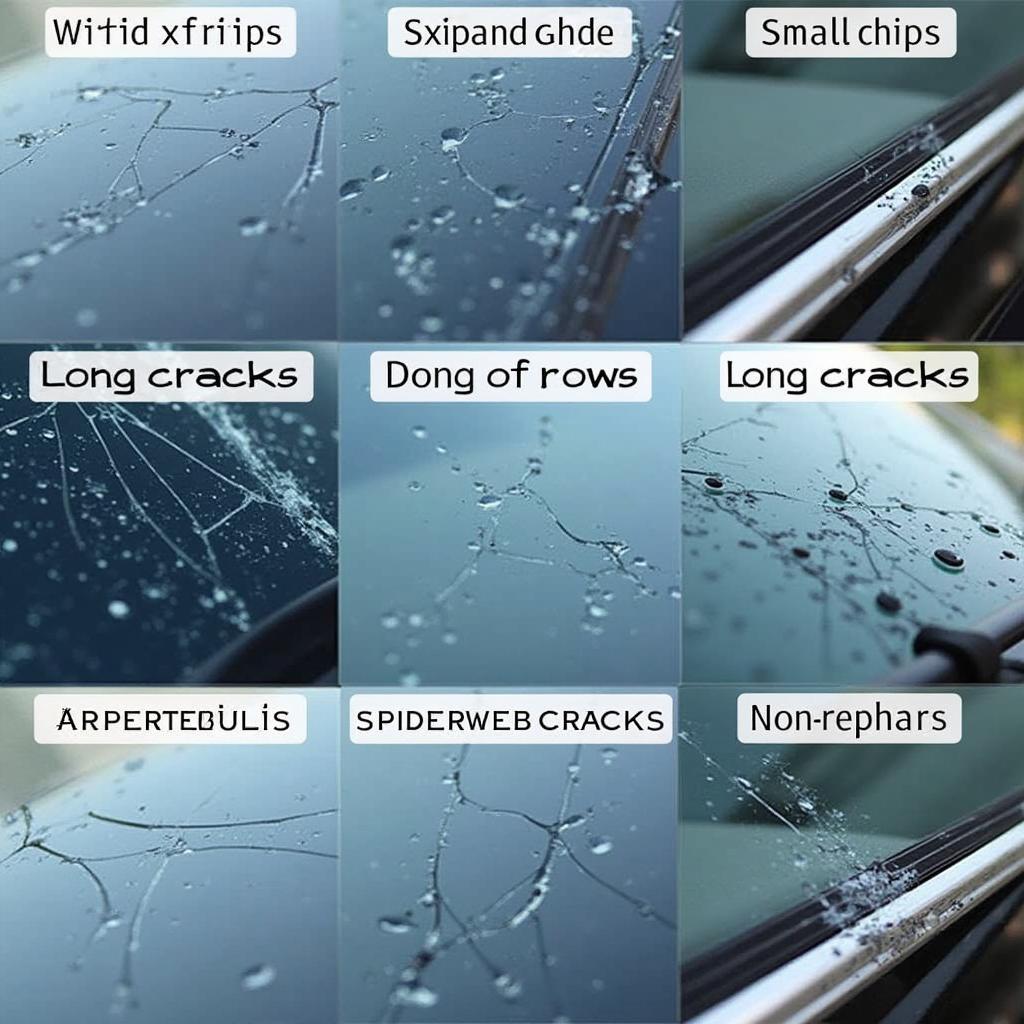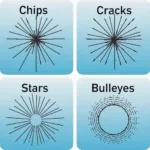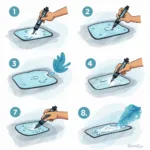Dealing with a damaged car window is never fun. Whether it’s a tiny chip from a stray pebble or a large crack from a hailstorm, it can be tempting to assume replacement is your only option. However, understanding when to repair, not replace, a car window can save you significant money and hassle.
This guide will walk you through the types of car window damage, the repair vs. replacement dilemma, and factors to consider when making your decision.
Assessing the Damage: To Repair or Replace?
Not all car window damage is created equal. Some damage is easily repairable, while other instances necessitate a complete window replacement. Here’s a breakdown:
Repairable Car Window Damage:
- Small chips and cracks: Often referred to as “bullseyes” or “stars,” these minor blemishes can usually be repaired if they’re smaller than a dollar bill.
- Long cracks without edge damage: Even long cracks can be repaired if they haven’t impacted the edges of the window.
- Scratches: Superficial scratches that haven’t penetrated the glass can often be buffed out by a professional.
Damage Requiring Window Replacement:
- Large or complex cracks: Cracks exceeding the size of a dollar bill, spiderweb cracks, or those affecting the edges of the window usually require replacement.
- Deep chips or cracks: If the damage penetrates multiple layers of the glass, replacement is typically necessary.
- Damage to the window frame: If the window frame itself is damaged, a simple repair won’t suffice.
 Types of Car Window Damage
Types of Car Window Damage
Why Repairing Your Car Window Is Often the Smarter Choice
When it comes to minor car window damage, opting for repair over replacement offers a range of benefits:
- Cost-effectiveness: Repairing a car window is significantly cheaper than replacing it, often costing a fraction of the price.
- Time-saving: Repairs can usually be done within an hour, while replacements might require you to leave your car at the shop for a longer period.
- Preservation of the original seal: Repairing maintains the factory seal of your car window, minimizing the risk of future leaks or wind noise.
- Environmentally friendly: Repairing reduces waste compared to replacing the entire window.
When Replacement Becomes Necessary: Recognizing the Signs
While repair is often the preferred option, there are instances where replacement is unavoidable:
- Obstructed vision: If the damage obstructs the driver’s line of sight, immediate replacement is crucial for safety reasons.
- Extensive damage: As mentioned earlier, large or complex cracks and deep chips often require a complete replacement.
- Damage affecting safety features: If the damage compromises embedded sensors or antennas within the window, replacement is essential for their proper functioning.
Making the Call: Factors to Consider
Deciding whether to repair or replace your car window involves considering several factors:
- Extent and location of the damage: Size, type, and location of the damage play a significant role in determining the feasibility of repair.
- Your budget: Repairs are typically more budget-friendly than replacements.
- Your car insurance coverage: Check your insurance policy to see if it covers car window repair or replacement and understand your deductible obligations.
- Safety concerns: Prioritize safety. If the damage hinders visibility or affects safety features, opt for replacement.
“When it comes to car window damage, a stitch in time saves nine,” says John Smith, Automotive Expert at CarRepairOnline. “Addressing minor chips and cracks promptly can prevent them from spreading and turning into major issues requiring costly replacements.”
Maintaining Your Car Windows: Prevention Tips
Taking proactive steps to protect your car windows can help you avoid dealing with damage in the first place:
- Maintain a safe following distance: Tailgating increases the risk of flying debris hitting and damaging your windshield.
- Be mindful of temperature changes: Extreme temperature fluctuations can weaken the glass, making it more susceptible to damage.
- Avoid slamming doors: The force of slamming car doors can create pressure changes that may cause existing chips or cracks to spread.
Conclusion
Knowing when to repair, not replace, a car window can save you money and ensure your vehicle’s safety and structural integrity. By understanding the different types of damage, weighing the pros and cons of repair vs. replacement, and prioritizing safety, you can make informed decisions about your car window maintenance. Remember, early intervention is key! A small investment in repair today can potentially save you from a costly replacement down the road.


